TAURUS
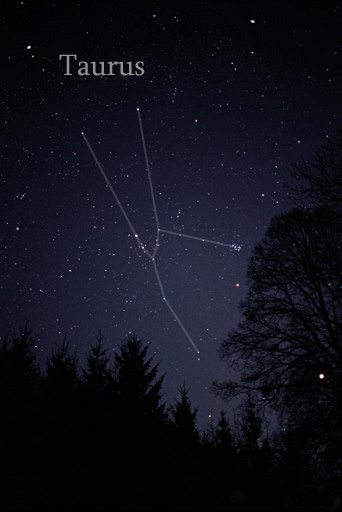
Till Credner - Own work, AlltheSky.com,
CC BY-SA 3.0, wikimedia
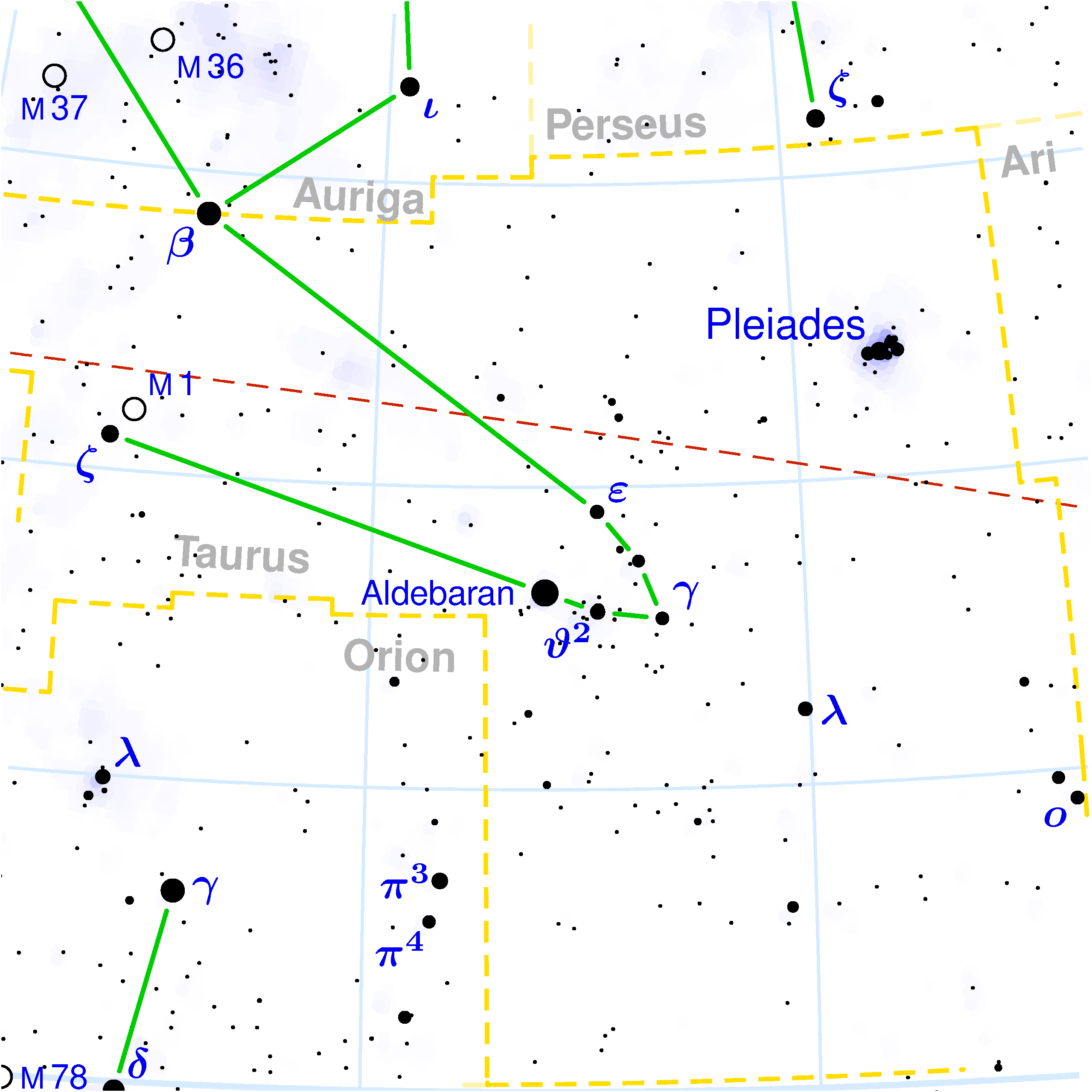
CC BY-SA 3.0, wikimedia
Taurus is one of the most beautiful constellations even only for the fact that it hosts the Pleiades, the brightest open cluster in the sky. It is an easily recognizable constellation where the mythological bull and the star formation correspond almost perfectly.
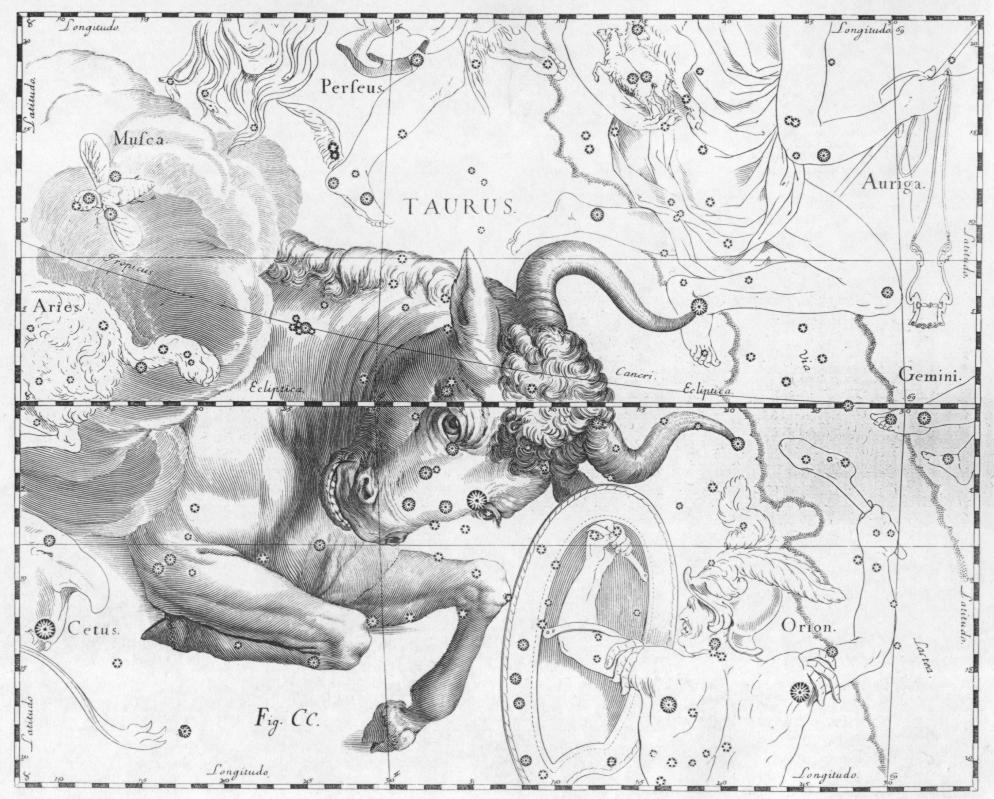
Johannes Hevelius - Scanned by: Torsten Bronger 2003 April 4 - Atlas Coelestis.
Johannes Hevelius drew the constellation in Uranographia, his celestial catalogue in 1690.
Source: sourceforge.net,
Public domain, wikimedia
The Taurus constellation represents one of the most famous disguises of Zeus when he assumed the form of a magnificent white bull to abduct Europa, a legendary Phoenician princess. Some scholars believe, however, that Taurus represents the Minotaur, offspring of Pasiphae, wife of Minos, and a snow-white bull sent to Minos by the god Poseidon for sacrifice. The Minotaur was kept in the Labyrinth in the Palace of Knossos in Crete and was eventually killed by Theseus.
Elnath is the Beta star and forms the northern horn of Taurus. It was connected to the constellation of Auriga in the past in which it made up one of the stars at the base of the pentagon, an asterism which has been in existence since antiquity. The star is about to enter its final stages of evolution. Presently it is a light blue hue but it will soon turn into a red giant. It is 133 light-years from us and is 700 times brighter than the Sun.
Zeta Tauri makes up the southern horn of Taurus. The star is not particulary bright perhaps due to its distance from us at 400 light-years. It is a double star 5,700 times brighter than the Sun.
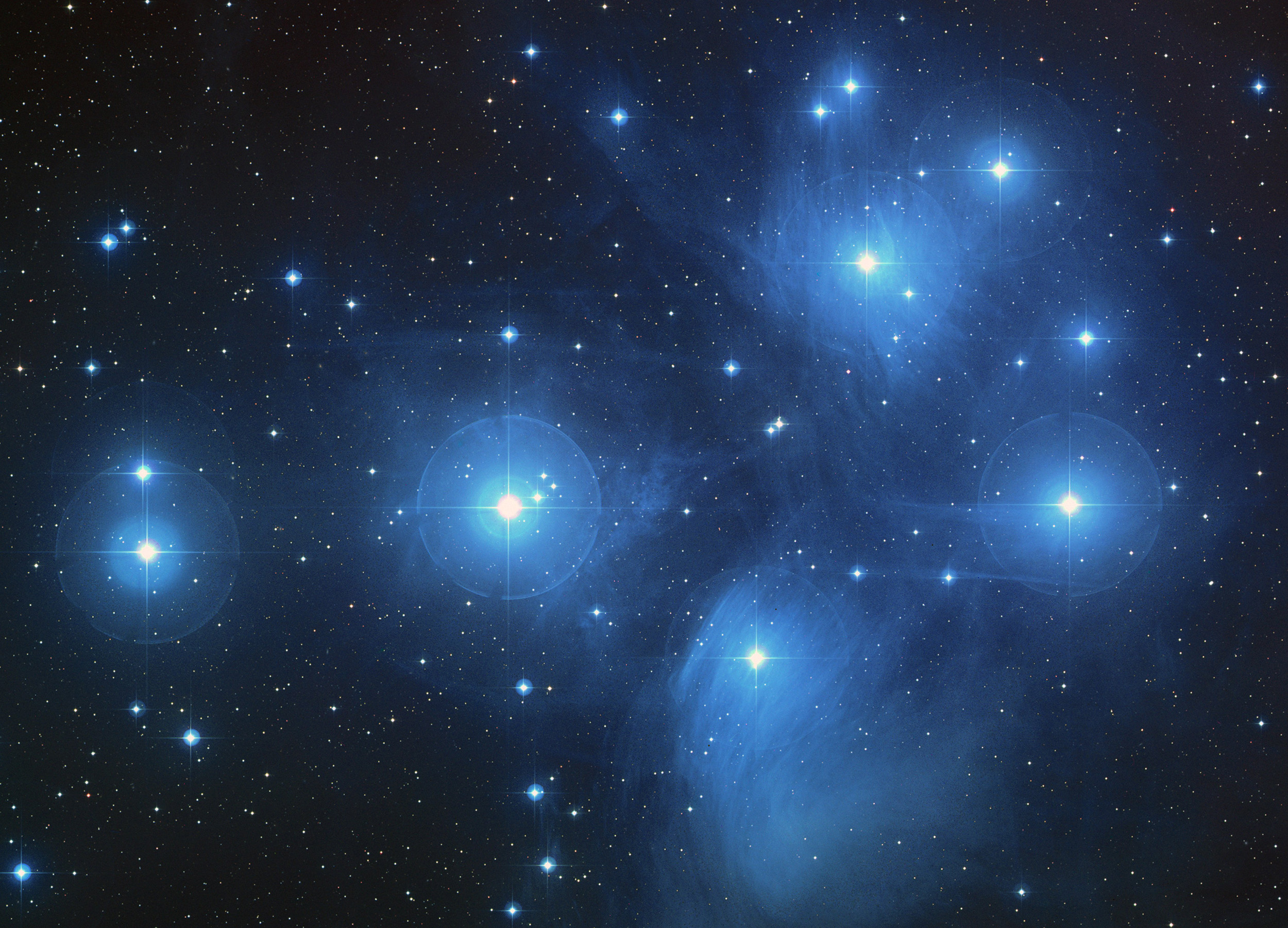
NASA, ESA, AURA/Caltech, Palomar Observatory
The science team consists of: D. Soderblom and E. Nelan (STScI), F. Benedict and B. Arthur (U. Texas), and B. Jones (Lick Obs.)
hubblesite.org,
Public domain, wikimedia
The Pleiades, known as M45, is the most famous open cluster in the sky. Its breathtaking appearance is due to its position at 440 light-years from us and the fact that it is made up of new stars, still covered in the nebulous matter from which they formed. The brightest star, Alcyone, is the third brightest in the constellation.
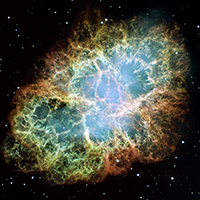
NASA, ESA, J. Hester and A. Loll (Arizona State University) - HubbleSite: gallery, release, Public domain, wikimedia
M1, the Crab Nebula, is not far from Zeta Tauri. It is what is left over from a supernova explosion in our Galaxy in 1054. It is 6,500 light-years away and contains a neutron star the first pulsar (radio source pulsar) which was discovered in 1968. It is thought that the star has a diameter of 30 km and an incredible density, a sugar cube made from the matter of the star would weight 200 million tons!
Southern Hemisphere: Taurus is visible at the same time of the year as in the Northern hemisphere but lower on the horizon. At the southern middle latitudes, in mid January, right after sunset, it can be seen towards the north between the horizon line and zenith.